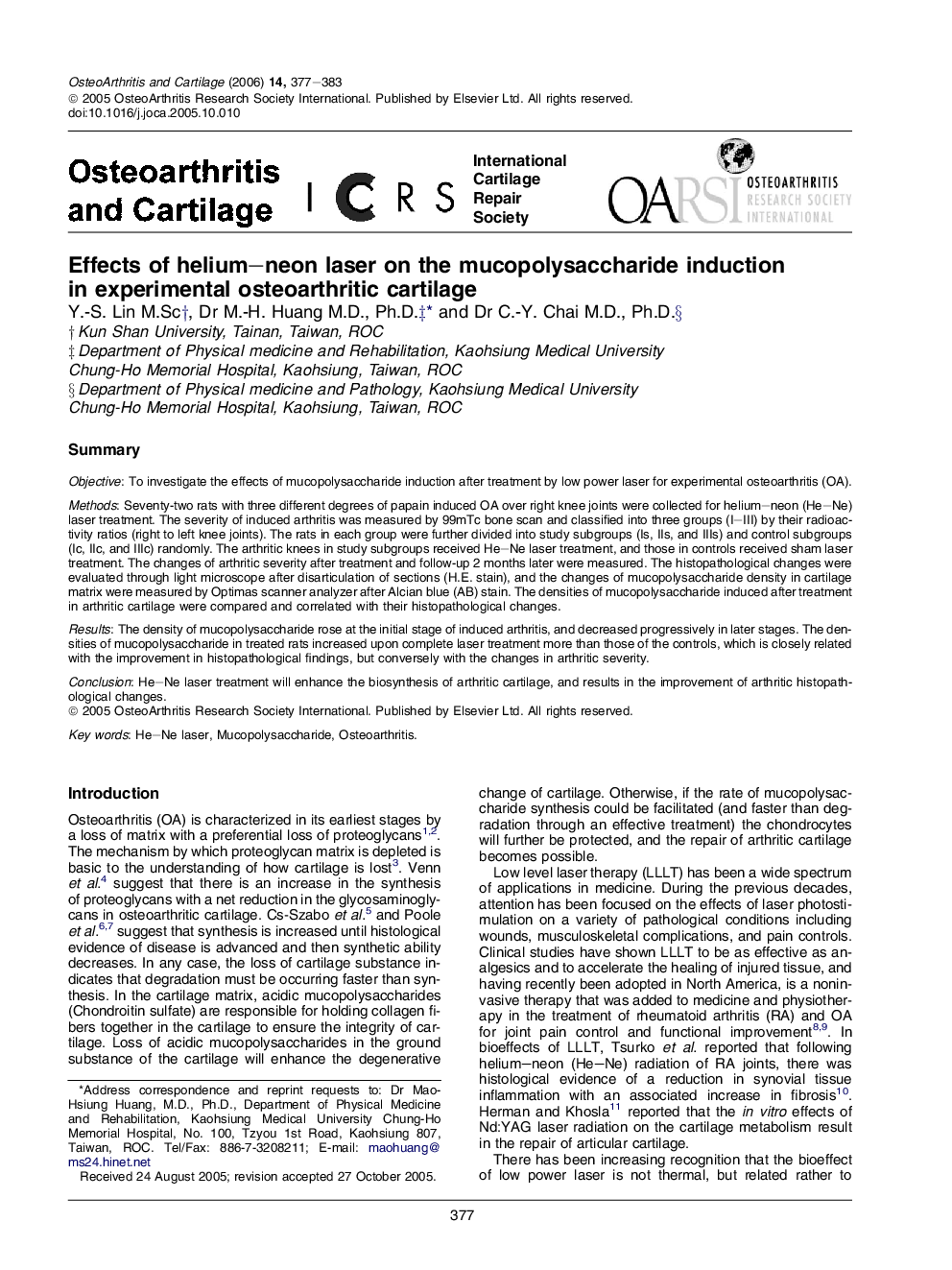| Article ID | Journal | Published Year | Pages | File Type |
|---|---|---|---|---|
| 3382007 | Osteoarthritis and Cartilage | 2006 | 7 Pages |
SummaryObjectiveTo investigate the effects of mucopolysaccharide induction after treatment by low power laser for experimental osteoarthritis (OA).MethodsSeventy-two rats with three different degrees of papain induced OA over right knee joints were collected for helium–neon (He–Ne) laser treatment. The severity of induced arthritis was measured by 99mTc bone scan and classified into three groups (I–III) by their radioactivity ratios (right to left knee joints). The rats in each group were further divided into study subgroups (Is, IIs, and IIIs) and control subgroups (Ic, IIc, and IIIc) randomly. The arthritic knees in study subgroups received He–Ne laser treatment, and those in controls received sham laser treatment. The changes of arthritic severity after treatment and follow-up 2 months later were measured. The histopathological changes were evaluated through light microscope after disarticulation of sections (H.E. stain), and the changes of mucopolysaccharide density in cartilage matrix were measured by Optimas scanner analyzer after Alcian blue (AB) stain. The densities of mucopolysaccharide induced after treatment in arthritic cartilage were compared and correlated with their histopathological changes.ResultsThe density of mucopolysaccharide rose at the initial stage of induced arthritis, and decreased progressively in later stages. The densities of mucopolysaccharide in treated rats increased upon complete laser treatment more than those of the controls, which is closely related with the improvement in histopathological findings, but conversely with the changes in arthritic severity.ConclusionHe–Ne laser treatment will enhance the biosynthesis of arthritic cartilage, and results in the improvement of arthritic histopathological changes.
